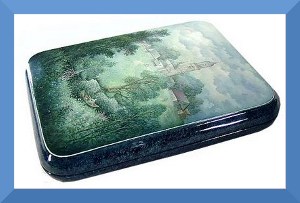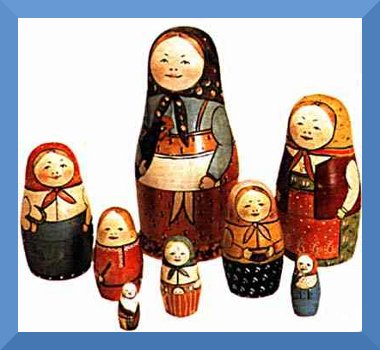
December 2010, Issue 11
Dollhouse Tourism, Russia
Page 76
 Owing to their fine craftsmanship and beautiful paintings, the Lukutin factory achieved Russia's highest honor, becoming the official supplier to the Russian Royal Family. This granted Lukutin to mark his work with the royal emblem: a double eagle.
Owing to their fine craftsmanship and beautiful paintings, the Lukutin factory achieved Russia's highest honor, becoming the official supplier to the Russian Royal Family. This granted Lukutin to mark his work with the royal emblem: a double eagle.
Other Tsars continued to bestow this honor and today, an antique Lukutin box may have up to four imperial marks on it. After the Russian Revolution, the villages of Palekh, Kholui and Mstera also began producing fine lacquered boxes, depicting characters from real life, fairy tales and literary works. Tourists visiting Palekh must include a stop at the Art College, founded in 1935, and The State Palekh Art Museum which boasts the biggest miniature painting collection in Russia of over 2,000 works.

Russian nesting dolls, or matryoshka, may be the most widely known doll around the world. Variations of these dolls within dolls can be found in almost every culture today, but it was in 1890 that the first matryoshkas were made at the Children's Education Workshop on the Abramtsevo estate, owned by patron of the arts Sava Mamotov.
Sometimes called a babuska doll (Russian for "Granny"), these dolls are traditionally hand-painted and consist of a hollow wooden figure which separates, top from bottom, to reveal a smaller figure inside. Each new hollow figure decreases in size to reveal smaller and smaller hollow dolls, until the smallest, solid, doll is revealed.
Copyright© 2010
Custom Dolls, Houses & Miniatures / CDHM







